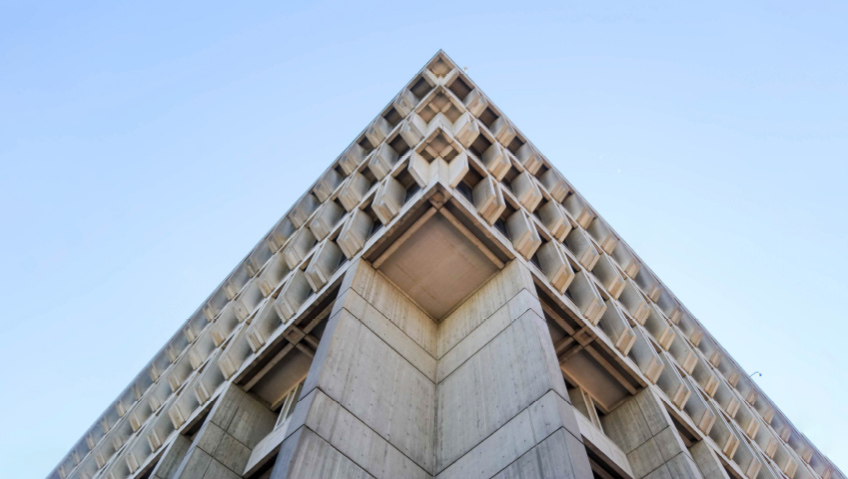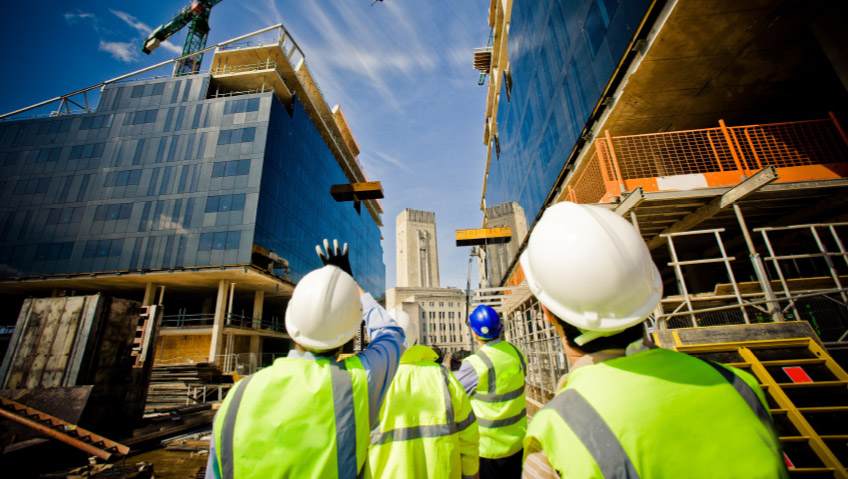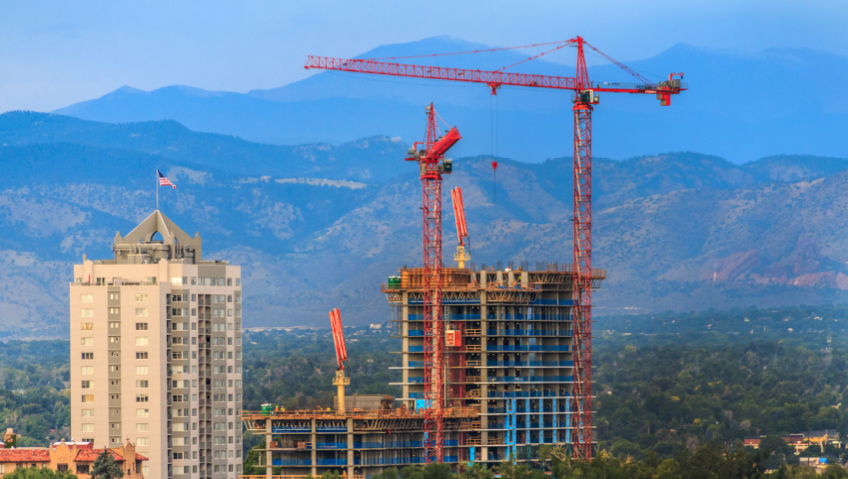There is no question that concrete is a strong and enduring cornerstone of the construction industry. Just consider the Pantheon and Colosseum in Rome, testaments to the durability of one of man’s most widely used materials.
The composite of sand, aggregate (typically gravel or stones) and water would later be combined with steel rods or mesh to form reinforced concrete. This superpowered type of concrete became the basis for skyscrapers such as the Empire State Building, completed in 1931, and in a more advanced form, the 57-storey “Jenga tower” apartments in Lower Manhattan in 2016.
When you look at the history of concrete, it is the foundation of modern development—not only putting roofs over our heads, but also taming nature with bridges across rivers and roads to travel on land with speed and ease. It was an inexpensive way to rebuild cities that were destroyed by fire bombs and nuclear warheads in the Second World War. It has provided structures for health care, energy, education, and industry around the world. And just think of the magnificence of sports stadiums like the retractable-roof AT&T Stadium, home of the Dallas Cowboys in Arlington, Texas.
After water, concrete is the most used substance on the planet, with twice as much concrete used in construction as all other building materials combined, according to ScienceDirect. Its advantages as a construction material are numerous, including its high strength and low cost—but it does have downsides. As our built environment replaces nature, the concrete becomes a hard second skin across fertile topsoil and former habitats for wildlife.
What policymakers and environmentalists alike are most concerned about, though, is the production of concrete. Reports from the British think-tank Chatham House say the production accounts for between four and eight percent of global carbon dioxide emissions. Compared to other materials, only oil, coal, and gas are more of a threat to the environment as sources of greenhouse gases. During concrete manufacturing, large quantities of carbon dioxide are released, both as a chemical by-product of cement production and in the energy required to fuel these reactions.
“If concrete was a country, it would be the third biggest emitter of CO2 in the world,” says Michael Wise, Co-founder and Chief Technology Officer at revolutionary construction company Concrete4Change.
His company provides just one example of the efforts being made to reduce concrete’s environmental impact. The Concrete4Change team is developing technology that creates net zero concrete at a cheaper cost, helping to reduce the need for expensive materials to move concrete innovation forward.
Wise’s approach is to take full advantage of concrete’s ability to naturally absorb CO2, a process known as carbonation. His technology will “exploit this potential, enabling concrete to become the safest form of CO2 sink in the world. Even after the demolition of concrete, there is no leakage of CO2,” explains the Concrete4Change website.
How exactly? The technology captures and utilizes CO2 by mineralizing it in the concrete with a proprietary, low-cost, absorbent material that absorbs CO2 from industrial processes. This carrier is mixed as an additive into the concrete mix, so you end up with well-controlled carbonation of concrete during the curing, boosting its strength and “locking up CO2.”
“Our technology will help the construction industry to recycle its waste CO2 emissions, reduce costs, and increase the lifespan of buildings,” says Wise, noting that it can be used on any site. “The only difference is that it is cheaper and more durable.”
Concrete is clearly a primary focus for research and development as our built environment continues to expand and advance. Predicted population growth—to 9.7 billion in 2050, a jump of almost 2 billion—means that we will need more infrastructure to house and serve people while at the same time making sure we protect our natural resources.
Indeed, sustainability is a driver across all industries for reasons that will become even more apparent in the next 20 years.
“Sustainable development is a fundamental break that’s going to reshuffle the entire deck. There are companies today that are going to dominate in the future simply because they understand that,” said François-Henri Pinault, French businessman and thought leader, to the New York Times Style Magazine.
This underscores one of the largest challenges to sustainability and protecting the planet: it often comes at the expense of profit. It is easier for businesses to uphold the status quo rather than make changes for the greater good. However, there is a growing wave of consumer sentiment that is pushing companies to prioritize sustainability and ethical behaviour.
So how do you make it possible and viable for construction companies to make change and adopt greener concrete? It’s a work in progress.
MIT engineers in early 2023 discovered other alternative additives to transform concrete into an effective carbon sink. Introducing new materials into existing concrete manufacturing processes shows huge potential to reduce its carbon footprint without diminishing concrete’s bulk mechanical properties that architects and builders rely on.
The MIT approach intervenes in the very early formation of carbonates during concrete mixing and pouring before the material sets. The study’s engineers note that this largely eliminates the detrimental effects of carbon dioxide uptake after the material cures.
The best part of the process is its simplicity. One inexpensive ingredient is added to the mix: sodium bicarbonate, otherwise known as baking soda. In lab tests, the MIT team showed that as much as 15 percent of the total amount of carbon dioxide that comes with cement production could be mineralized during these early stages—enough to make a significant dent in the material’s carbon impact.
Another benefit is that the resulting concrete sets much more quickly without impacting its mechanical performance, creating efficiencies for productivity. In a business where time is money, that’s a big win. Formwork, for example, can be removed earlier, so it takes less time to complete a building or bridge.
The composite, a mix of calcium carbonate and calcium silicon hydrate, “is an entirely new material,” says study author Admir Masic, MIT professor of civil and environmental engineering, as reported by MIT News. “Through its formation, we can double the mechanical performance of the early-stage concrete.” He adds that the research is ongoing to evaluate the concrete’s performance over the long term, but the discovery points to “an optimistic future for the development of carbon neutral construction materials.”
The idea of early-stage concrete carbonation is not entirely new, the authors say, but their work demonstrates that the precuring capacity of concrete to sequester carbon dioxide has thus far been underestimated and underutilized.
When we talk about the circular economy, concrete is also part of the discussion, with a number of projects underway to address the high carbon output of the concrete industry and the other significant resource it impacts: water. Concrete reportedly uses almost a tenth of the world’s industrial water use, and while concrete producers are not yet paying for water, they may soon be.
Meanwhile, researchers from the University of Tokyo have developed a new method of producing concrete without cement. Their technique represents another way for the construction industry to reduce its carbon emissions, and suggests the potential for building on the Moon and Mars. We may be headed toward colonization sooner than we think, and experiments with lunar soil are revealing that growing food is possible and robot rovers could find, drill, and gather surface ice for water supply.
Back on Earth, another issue facing the construction industry is the limited availability of suitable sand for concrete production, which researchers say requires a specific size distribution to provide the correct properties.
“In concrete, cement is used to bond sand and gravel,” says lead author of the University of Tokyo study, Yuya Sakai. “Some researchers are investigating how more cement can be replaced with other materials, such as fly ash and blast furnace slag, to reduce CO2 emissions, but this approach is unsustainable because the supply of these materials is decreasing owing to reduced use of thermal power systems and increased use of electrical furnace steel,” as Chem Europe reports.
Sakai’s team worked to produce the chemical tetra alkoxysilane from sand through a reaction with alcohol and a catalyst by removing water, which is a by-product of the reaction. “Our idea was to leave the water to shift the reaction back and forth from sand to tetra alkoxysilane, to bond the sand particles with each other.”
Water conservation, producing concrete without cement, technology to capture CO2—innovation in the industry certainly holds promise. The concrete of tomorrow is shaping up to be part of the solution for greener, more sustainable living.






